Lush Life, Part II – When Art Danced with Music: Diaghilev and the Ballets Russes: 1909 – 1929

“A Mask,” by Vasiliev Nijinsky
Readers of this blog may remember that my first posting about this remarkable show at the National Gallery of Art in Washington, DC, ended on a poignant note: that Vasiliev Nijinsky had been institutionalized for schizophrenia, never to dance again. Pondering this sad loss, you leave his tortured drawing, “A Mask,” and walk up the winding staircase to the next level of “When Art Danced with Music.”

Backcloth for “Firebird” by Natalia Goncharova, 1914
Natalia Goncharova’s 1926 painted backcloth for the coronation scene in “Firebird” is breathtaking: hundreds of onion domes glitter on this enormous cloth (51.5 by 35.5 feet, one of the largest items ever displayed here). Under a cobalt blue sky, the domes evoke a walled town in a mythic Russia. Arrayed on the walls are painted versions of the coronation scene backcloth as well as a 1914 curtain design for “The Golden Cockerel,” a riot of color celebrating Russian folklore.

Set Design, “The Golden Cockerel, ” by Natalia Goncharova, 1914
Playing on a huge screen facing the backcloth is a film of a 2010 reinterpretation of “The Firebird” (choreographed by Michel Fokine and with Igor Stravinsky’s score) by the English National Ballet. Dramatically silhouetted black and white images of a dancer move across the musical score, copies of the original programs, and a film of Karsavina as the first Firebird, among other images. While it’s wonderful to hear the music in the presence of the evocative backcloth, I would have preferred seeing a more traditional Firebird.

Costume design for the Soldier, from “The Tale of the Buffoon,”
Also featured in the first room is a little-known 1915 ballet, “The Tale of the Buffoon,” based on a Russian folktale. Mikhail Larionov designed the cubist-inspired costumes. My favorite was the costume for the Soldier with his wrap-around beard and jaunty hat.
Narrated by Tilda Swinton, the documentary film accompanying the show explores Diaghilev’s early life in a prosperous family made wealthy by a flourishing Vodka business. Poets, play writes, and other notables made regular appearances at the family’s salons, perhaps seeding the notion in young Diaghilev’s mind that collaboration among the arts is an art form in itself.

Costume for “Cleopatra,” by Robert and Sonia Delaunay, 1918
In the next room, you’ll see Robert Delaunay’s 1918 set design for “Cleopatra” in brilliant water color and gouache, plus costume designs by Robert and Sonia Delaunay, complete with bulls eye bustier.

Costume for the “Manager,” from the ballet, “Parade,” by Pablo Picasso, 1917
The ballet “Parade,” 1917, resulted when Serge Diaghilev reportedly commanded the young Jean Cocteau to “Astonish me!” With scenario by Jean Cocteau, music by Erik Satie, set, curtain and costumes by Pablo Picasso, and choreographed by Leonide Massine, “Parade” is meant to recreate popular music hall entertainment of the time, but with added modern innovations: the skyscraper, airplane, and typewriter. Completely new, “Parade” not only astonished Diaghilev, but outraged audiences at the 1917 premier. Here we see the “Chinese Conjurer,” a dancing horse, a “young American girl,” and the two marvelous “Managers,” in an excerpt of a 2007 performance by Europa Danse. Take a look: http://www.youtube.com/watch?v=_Chq1Ty0nyE

“The Russian Ballet,” by Max Weber, 1916
“The Russian Ballet,” a standout oil painting by Max Weber (1916), is pure color, and movement. Other paintings include “Harlequin (Portrait of Leonide Massine), 1917, and “Mme. Picasso (Portrait of the Artist’s wife, Olga Khoklova”) both by Pablo Picasso. Khoklova danced in the premier of “Parade,” and left the Ballets Russes to become Picasso’s first wife.

Costume for a “Mourner,” by Henri Matisse, from the ballet, “Song of the Nightingale,” 1925
One day, we learn in the film, Stravinsky and Diaghilev appeared, unannounced, at Henri Matisse’s home. They told him that he simply must design the costumes for the new ballet based upon the Hans Christian Anderson fairytale, “Song of the Nightingale.” He complied, saying he wanted his eye-catching abstract patterns for the fanciful “Mandarin” court to be “like a painting, but with colors that move.” You can see that movement in a film excerpt by Les Ballets de Monte Carlo, 2003.

Mikhail Baryshnikov as “The Prodigal Son,” 1978
With choreography by George Balanchine, music by Sergei Prokofiev, and fauvist set designs by Georges Rouault, “The Prodigal Son,” 1929, is reproduced in a film of a 1978 New York City Ballet performance featuring an astonishing Mikhail Baryshnikov. A heartbreaker with his 70s shag haircut, Baryshnikov’s formidable dancing prowess is matched by his fine acting.

Costumes by Giorgio de Chirico for the ballet, “The Ball,” 1929
Giorgio de Chirico conceived of the costumes and set design for “The Ball,” 1929 surrealist concoction featuring architectural salvage—columns, bricks, pediments—as bowtie and ball gown. Even the walls of the gallery space have been painted to represent brick.

Poster for the “Blue Train” to Monte Carlo, by Roger Broders, 1929
Bronislava Nijinska choreographed the charming 1924 “Blue Train” to music by Darius Milhaud, with libretto by Jean Cocteau and costumes by Coco Chanel. The so-called Blue Train took the young and fabulous to Monte Carlo, seen here in a stunning 1929 poster by Roger Broders. The Ballets Russes performed in Monte Carlo every year, perhaps sunning themselves in knitted wool

Bathing Costumes for the ballet, “The Blue Train,” by Coco Chanel, 1924
bathing costumes similar to Chanel’s “Costume for a Gigolo” and “La Pelouse.” Restaged in 1994 by Irina Nijinska (Bronislava’s daughter) and Frank Reis for the Paris Opera Ballet, this fresh breath of sea air is utterly modern. Fittingly, the front cloth for the ballet is an exuberant beach scene after Pablo Picasso’s 1922 “Deux Femmes Courant Sur La Plage.” Never has the beach seemed more inviting!

Front cloth for the ballet, “The Blue Train,” after Picasso, 1924
And never, it seems now, will there ever be an era as rich in artistic collaboration than Diaghilev’s sadly short, but immensely rich time as impresario extraordinaire: 1909 – 1929. He died of complications of diabetes in 1929 in Venice, Italy at only 57. Without his flair and daring, the Ballets Russes never again achieved the brilliant successes of the Diaghilev years.

Sergei Diaghilev
1872 – 1929
On view until September 2, 2013, these dance performances will accompany the show:
Kirov Academy of Ballet – July 13, 1:00 and 3:30
Dana Tai Soon Burgess Dance Company – August 11, 1:00 and 3:30
http://www.nga.gov/content/ngaweb/exhibitions/2013/diaghilev.html
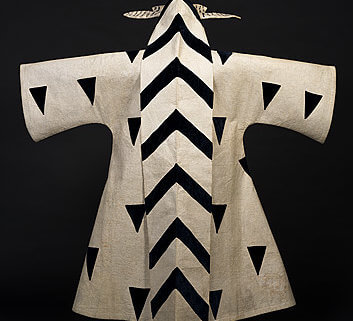

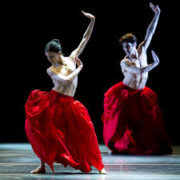
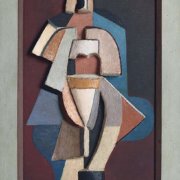
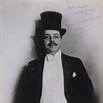

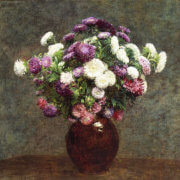
Dear Ellen
Thank you for your great letter about KAB’s performance at the National Gallery of Art in Washington, DC, everything is great what you written about our students- is great! Thank you so much, our performance was very successful, my new version I make a choreography specially for them. My students was dancing great, only will be happy to see in your article Choreography after Mikhail Fokine Staging Nikoloz Makhateli
Sincerely: Nikoloz Makhateli Teacher at KAB(Professor of Ballet)
Thank you so much for your note! I enjoyed the performance and look forward to more!
Will be happy to see any time in my class at Kirov Ballet Academy. soon we have winter show Dec 21-22., Sincerely: N.Makhateli
Thank you! I would be delighted to attend the winter show. Will look forward to seeing more of your talented students!